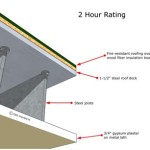What Is U.S. Debt Ceiling?
The debt ceiling is a legal limit on the amount of debt that the United States government can borrow. It is set by Congress and must be raised periodically to avoid default. The debt ceiling has been a source of political controversy in recent years, as some members of Congress have refused to vote to raise it, arguing that it is necessary to reduce the government's debt. Others have argued that raising the debt ceiling is essential to avoid a financial crisis.
The debt ceiling was first established in 1917, when Congress passed the Second Liberty Bond Act. This act authorized the government to borrow $22 billion to finance World War I. The debt ceiling has been raised many times since then, most recently in December 2021, when Congress passed a bill to raise the debt ceiling by $2.5 trillion.
The debt ceiling is a complex issue with a long history. It is important to understand the debt ceiling and its implications in order to make informed decisions about the future of the United States' fiscal policy.
Setting the Debt Ceiling
The debt ceiling is set by Congress through a joint resolution. The resolution must be passed by both the House of Representatives and the Senate, and it must be signed by the President. The debt ceiling can be raised or lowered at any time, but it must be set at a level that is sufficient to cover the government's borrowing needs.
There is no fixed formula for setting the debt ceiling. Congress typically considers a number of factors when setting the debt ceiling, including the government's current debt, its projected revenue and spending, and the economic outlook. Congress may also consider political factors, such as the views of the President and the public.
Debt Ceiling Controversies
The debt ceiling has been a source of political controversy in recent years. Some members of Congress have refused to vote to raise the debt ceiling, arguing that it is necessary to reduce the government's debt. Others have argued that raising the debt ceiling is essential to avoid a financial crisis.
The debt ceiling debate often becomes heated, with both sides accusing the other of being irresponsible. However, it is important to remember that the debt ceiling is a legal limit that must be raised in order to avoid default.
Consequences of Default
If the United States government were to default on its debt, it would have a devastating impact on the economy. Interest rates would rise, the stock market would crash, and the dollar would lose its value. This would lead to a recession or even a depression.
Defaulting on the debt would also damage the United States' reputation in the world. It would make it more difficult for the government to borrow money in the future, and it would weaken the dollar's status as the world's reserve currency.
Conclusion
The debt ceiling is a complex issue with a long history. It is important to understand the debt ceiling and its implications in order to make informed decisions about the future of the United States' fiscal policy.

Us Debt Ceiling What It Is And Why There One Bbc News

Charting The Rise Of America S Debt Ceiling

Q A Everything You Should Know About The Debt Ceiling Wed 01 18 2024 12 00 Committee For Responsible Federal Budget

The U S Debt Ceiling Has Risen No Matter Who Is In Office
Legislative Federal Debt Ceiling Council On Foreign Relations

Us Debt Ceiling History Sgmoneymatters

The U S Debt Ceiling And Its Global Implications

Us Debt Ceiling Drama Piles On Yet More Unwanted Pressure Articles Ing Think

U S Debt Ceiling Costs And Consequences Pbs News

For The Us Government Debt Ceiling Crises Are Both Costly And Avoidable Usapp








